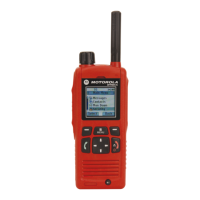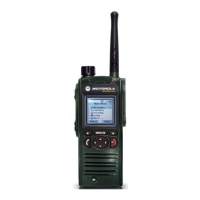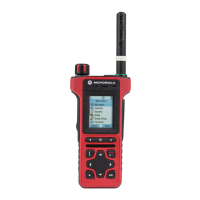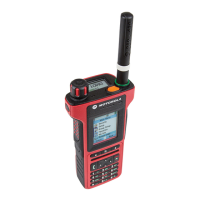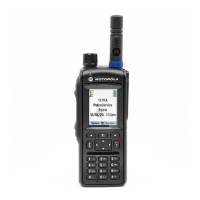the old call-out (even if it has not been responded). An ongoing call-out overrides the old one in any phase of the call-
out alert.
In normal mode, you can browse the CO Box and read all the call-out messages. In the call-out mode, you can only
read the ongoing call-out messages.
The call-out service function in two main phases:
1 Alert Phase – you receive the alert with the associated messages that you can respond to. These messages provide
all the important information about an incident. A special tone is played when the alert is coming in. The tone
volume range is configured in the codeplug and cannot be adjusted through the MMI. The conditions for stopping
this tone are configured in the codeplug (for example, upon pressing any key). Additionally, an ongoing alert tone
is paused on incoming call-out group call. This alert is resumed once the call ends (if not stopped before).
2 Information Phase – you are in the call-out mode and you may receive more messages about the incident with the
text or voice. You can also query for more information using the voice group call or the call-out text function
which enables to send a text message to the dispatcher host application. The voice message can be sent with the
high priority as a group call. You can answer back to the group or to the dispatcher using the voice group call.
You may receive more info about the incident via either via subsequent text or voice messages
This is a selling feature.
Call-Out Interactions
When you receive a call-out alert while being in the emergency mode, the message is ignored.
In the transmit inhibit mode, you can receive call-out messages. However, you cannot respond until the transmit
inhibit mode is deactivated. When you decide to leave the transmit inhibit mode after viewing the message, the radio
prompts to accept, standby, or reject the call-out.
The call-out feature is not supported in DMO.
In the fallback mode (that is, when you are in the local site trunking) you can receive a call-out call. In such case the
receiving radio enters the call-out fallback mode, which only includes voice communication. You can only clear the
fallback mode manually.
The dispatcher can test the feature by using the call-out test. The radio displays then Call-Out Test and generates the
alert tone. A soft key is available in the MMI with the label Test OK. After responding to it, the display returns to the
previous mode.
Storm plan alert is a special case of call-out. This alert is sent out to the larger group of people. You can respond to it
with any key stroke. After responding, you proceed to the information phase. The storm plan alert is sent several
times to raise reliability.
Radio Messaging System
The Radio Messaging System (RMS) feature enables radios to receive and send RMS messages through the TETRA
network using the Short Data Service (SDS) Transport Layer (TL).
Services and Features | 67
68015000878-G | | Send Feedback

